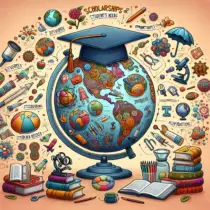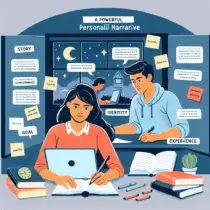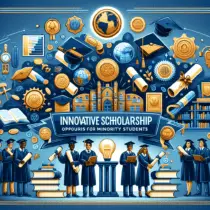Navigating the World of Scholarships for Diverse Student Needs and Aspirations
Education is often considered the passport to a better future. However, the journey to obtaining that passport can be fraught with financial hurdles. For many students, scholarships provide a crucial lifeline, enabling them to pursue their dreams without falling into overwhelming debt. Navigating the world of scholarships can seem daunting, but understanding the types of scholarships available and how to apply for them can make a significant difference. This article explores various scholarship opportunities that cater to diverse student needs and aspirations, focusing on a few standout examples.
Importance of Scholarships
Scholarships are essentially financial aid awards designed to support students in their educational pursuits. Unlike student loans, scholarships do not need to be repaid, making them an ideal form of financial assistance. They are merit-based, meaning they are awarded based on a student’s achievements, talents, or other criteria. Scholarships can cover a wide range of expenses, including tuition, books, and living costs.
Types of Scholarships
There are numerous types of scholarships available, each tailored to meet particular needs and circumstances:
-
Merit-Based Scholarships
These are awarded to students based on academic achievements, extracurricular activities, or special talents. Merit-based scholarships reward students who excel in specific areas. -
Need-Based Scholarships
These scholarships are designed for students who demonstrate financial need. They aim to make higher education accessible to those who might otherwise be unable to afford it. -
Athletic Scholarships
These are awarded to students who show exceptional skills in sports. Athletic scholarships often come with obligations such as participating in college sports teams. -
Field-Specific Scholarships
Some scholarships are tailored for students pursuing particular fields of study, such as engineering, medicine, or the arts. -
Minority Scholarships
These scholarships aim to support underrepresented groups such as racial minorities, women, or LGBTQ+ students. -
International Scholarships
These scholarships are designed for students studying outside their home country, helping to cover the extra costs associated with international education.
Noteworthy Scholarships
$5000 Vodafone UK Engineering Scholarship 2024
A prime example of a field-specific scholarship is the $5000 Vodafone UK Engineering Scholarship 2024. This scholarship targets aspiring engineers and aims to encourage innovation and excellence in the field of engineering. By providing financial support, Vodafone UK hopes to nurture the next generation of engineers who can contribute to technological advancements. This scholarship is an excellent opportunity for students who have a passion for engineering and demonstrate exceptional academic capabilities in related subjects.
$3,000 Horatio Alger Canadian Scholarships in Canada, 2024
Another noteworthy scholarship is the $3,000 Horatio Alger Canadian Scholarships in Canada, 2024. This need-based scholarship is designed for Canadian students who have faced significant adversities and yet continue to pursue their educational goals. The Horatio Alger Association believes in rewarding resilience and determination, making this scholarship ideal for students who have overcome personal challenges and are dedicated to their education.
Steps to Apply for Scholarships
Applying for scholarships can be a time-consuming process, but a systematic approach can simplify it. Here are some steps to help students navigate the application process:
-
Identify Your Needs and Strengths
Understanding what makes you stand out is the first step. Identify your academic achievements, talents, financial needs, and any unique circumstances. This will help you target scholarships that match your profile. -
Search for Scholarships
There are numerous resources available for finding scholarships, including online databases, high school guidance counselors, and college financial aid offices. Websites like Fastweb, Scholarships.com, and the official websites of educational institutions are excellent places to start. -
Read the Requirements Carefully
Each scholarship has specific eligibility criteria and application requirements. Make sure to read these carefully to determine if you qualify and to understand what documents and information will be needed for the application. -
Prepare Your Application Materials
Most scholarship applications require personal statements, letters of recommendation, academic transcripts, and sometimes a portfolio of work. Start gathering these materials early to avoid last-minute stress. -
Write a Compelling Personal Statement
A personal statement is your opportunity to showcase who you are beyond your grades and test scores. Highlight your achievements, challenges you have overcome, and why you are passionate about your field of study. -
Submit the Application on Time
Pay close attention to deadlines. Submitting your application on time, or even early, demonstrates responsibility and commitment. -
Follow Up
After submitting your application, it’s a good idea to follow up with the scholarship committee to ensure all your materials were received and to express your continued interest.
Tips for Success
-
Apply Early and Often
Start your scholarship search early and apply to as many scholarships as you qualify for. The more applications you submit, the higher your chances of receiving an award. -
Stay Organized
Keep track of application deadlines, required materials, and the scholarships you’ve applied for. A spreadsheet can be a helpful tool for staying organized. -
Tailor Each Application
While it may be tempting to use the same application materials for multiple scholarships, tailoring your application to each specific scholarship can make a significant difference. Highlight how you meet the unique criteria of each award. -
Seek Feedback
Have teachers, mentors, or family members review your application materials. Their feedback can help you refine your application and catch any errors you might have missed.
Utilizing Scholarships Beyond Tuition
Scholarships can be used for more than just tuition. They can also help cover costs such as textbooks, housing, and even personal expenses. Some scholarships offer stipends for research projects or study abroad programs. Understanding how to utilize scholarship funds effectively can help you make the most of the financial aid you receive.
Conclusion
Navigating the world of scholarships can seem overwhelming, but with careful research and organization, it is entirely manageable. Scholarships like the $5000 Vodafone UK Engineering Scholarship 2024 and the $3,000 Horatio Alger Canadian Scholarships in Canada, 2024, offer invaluable support for students with diverse needs and aspirations. By understanding the types of scholarships available and following a systematic application process, students can significantly alleviate the financial burden of higher education and focus on achieving their academic and career goals.






